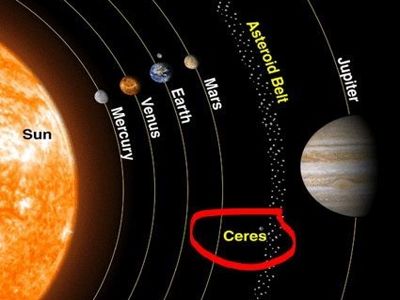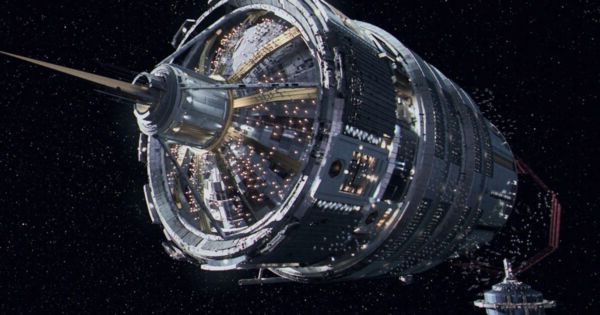A group of Finnish researchers is suggesting a permanent human colony in the Ceres orbit, a huge asteroid and dwarf planet in the asteroid belt between Mars and Jupiter. According to the squad, this “mega-satellite settlement” could be established by gathering materials from Ceres himself.
If that sounds familiar to fans of the popular science-fiction book and TV series “The Expansion,” that’s because, in that futuristic universe, Ceres Station plays a pivotal role as one of the first human off-world colonies. The futuristic universe of the show and novel centers around the first off-world settlement of mankind, Ceres Base, orbiting the dwarf planet. In the series, however, the space rock itself was spun up to create a crewed habitat on its surface with artificial gravity.
Scientists Propose Permanent Human Habitat Built Orbiting Ceres. In order to generate artificial gravity similar to that of Earth, the scientists propose spinning the massive structure around Ceres.
In an example of fact imitating fantasy, theorists have suggested a megastructure orbiting Ceres, citing the excess of nitrogen in the dwarf planet, a material that might make the Earth-like atmosphere possible. In reality, they argue that the world may also be “better than Earth” because there is no extreme weather or natural hazards, and there is plenty of living room to develop into.
They suggest a number of smaller spinning satellites, which are connected to each other by magnetic tethers, to create a massive disk-shaped megasatellite. Artificial gravity nearly equal to that of Earth could be accomplished by rotating a massive structure around Ceres.

In order to produce artificial gravity similar to that of Earth, scientists are proposing to rotate a massive system around Ceres. The habitat will have to spin entirely around the dwarf planet in just 66 seconds to sustain its artificial gravity. Such a habitat will have to spin the whole dwarf planet in just 66 seconds to sustain the artificial gravity.
For transport around the megastructure, the researchers propose Maglev train-like vehicles to conveniently link the habitat and keep the human colony linked. Researchers also suggest a space elevator for moving materials up from Ceres, and a series of large cylindrical mirrors that will reflect sunlight on the habitat at the same time as protecting it from sub-meter-scale meteoroids.
One of the great advantages that the researchers say Ceres has on Earth is that there are no natural hazards, and there is plenty of habitat for humans. The settlement could also serve as a base from which people could discover the far reaches of space.
Connecting each habitat would be maglev train-like vehicles, a weightless experience to passengers. “When first encountered, weightlessness causes nausea and vomiting for some people,” the paper reads. “However, in a settlement where people experience occasional weightlessness from childhood, it is plausible to think that they can tolerate it well during short trips.”
The settlement could also serve as a turning stone to other areas of the solar system. “The motivation is to have an artificial gravity settlement that allows growth beyond the living area of the Earth, while also providing easy inland travel for the population and a relatively low population density of 500/km2,” reads the abstract. This is for the population density of New Jersey.
Thanks to its low gravity and quick rotating, the researchers claim that a ‘space elevator’ is possible, enabling the fast transfer of materials from Ceres to other settlements without the need for much fuel.
And what about the pollution in space and the danger of meteorite impacts? The team also found these risks. They suggest a series of large cylindrical mirrors that could perform a double function by capturing sunlight and sending it on to the habitat, while still blocking sub-meter-scale meteoroids.
The science-fiction proposal could only serve as a stepping stone, physically and figuratively, for the accomplishment of human interstellar flight.
















